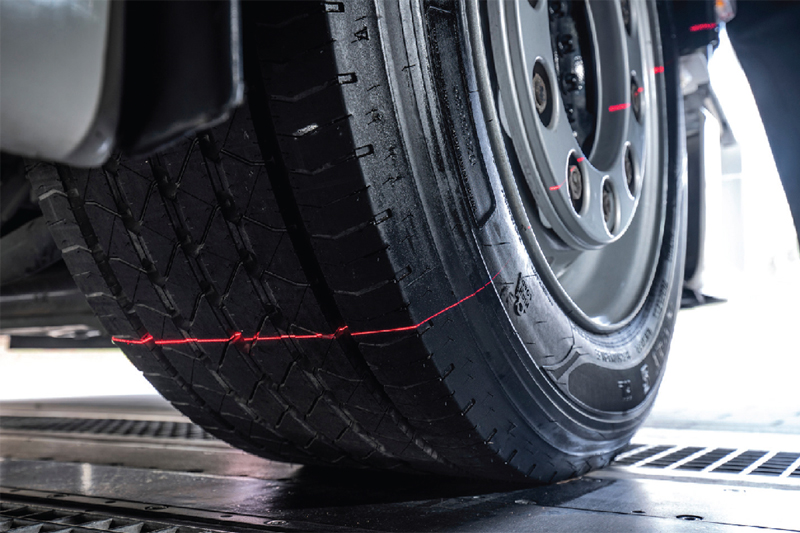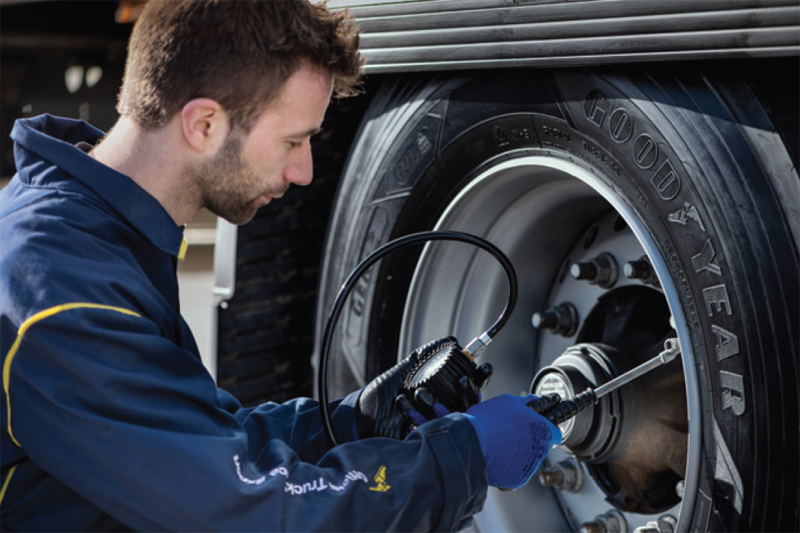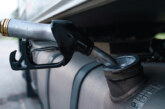
To help fleet managers ensure their tyres, in particular, are performing at their best during the winter months, Goodyear details its expert tips.
Even in the UK, which sees milder winters than other parts of Europe, roads can often be blocked and the adverse weather increases handling and braking distances significantly. However, there are a few simple things that operators can do to help their fleets keep moving.
Have a clear safety routine
In your safety routines at the depot, some important things to look out for include tyre treads and pressures, brakes and also fluids. Spotting these in advance and making sure the driver knows if there are any issues with the vehicle should maximise winter mobility so that each truck is ready to go, no matter the weather.
Of course, there are ways of streamlining this process. For instance, did you know Goodyear’s Drive-Over-Reader can check tyres quickly and accurately in just a few seconds? By scanning each vehicle as it enters the depot, it reads the registration plate, matches the data to the vehicle and delivers a time-stamped report almost instantly.
Employing methods like this will ensure optimal fuel consumption and longer lasting tyres, reducing the likelihood of tyre-related breakdowns, without adding any additional workload or complexity.

Choose the correct tyres
Tyres react differently according to temperature, so using products that are designed to deliver optimum performance in all types of weather – especially in winter – are essential. When it’s cold, some tyres don’t provide the same level of grip and traction as they would in warmer or even milder temperatures. Instead, specific compounds and tread patterns are needed to achieve the best possible performance.
Tyres marked with the 3 Peak Mountain Snow Flake (3PMSF) symbol are becoming the standard for winter tyre regulation across Europe. They help to improve handling and decrease winter braking distances by providing excellent grip on snow and slush. It’s the advanced tread design and siping that provides this grip and disperses water and wet snow slush, all increasing mobility. Since November 2012, the UNECE Regulation 117 has actually required that for tyres to be used in winter conditions, they must be marked with 3PMSF, to show that they are approved for use in severe snow conditions.
At Goodyear, our latest generation of KMax GEN-2 and FuelMax Endurance drive, steer and trailer tyres, all of which bear the 3PMSF marking, are especially developed to optimise traction throughout the service life, even at 75% worn. The blades we put inside the tyres and their advanced shape are resistant to tearing, chipping and chunking, and at the same time provide low rolling resistance to reduce the vehicle’s carbon footprint — all while ensuring the tyre is good for winter. For those who travel the alpine and Nordic regions, the Ultra Grip Max range is also ready to tackle the extreme winter conditions that operators are likely to face.

Replace regularly
Almost all of us who drive regularly have been in a situation where the road has been blocked by a jack-knifing lorry. This is caused by lack of traction, and given the increased weight carried by commercial vehicles, even the smallest skid can cause a large slide.
Keeping an eye on the tyre’s tread and overall condition is vital to keep trucks moving. Once the tread falls below 5- millimeters, tyres will only offer minimal traction. Early regrooving can also refresh traction at the start of winter, helping the tyre to last longer.
Uptime is important to the commercial vehicle industry, and by and large, fleets are proactive when it comes to preparing and maintaining their vehicles for winter use. There is always scope to improve a fleet’s mobility a little further, and the application of some winter and 3PMSF tyres are a sure way to do this.








